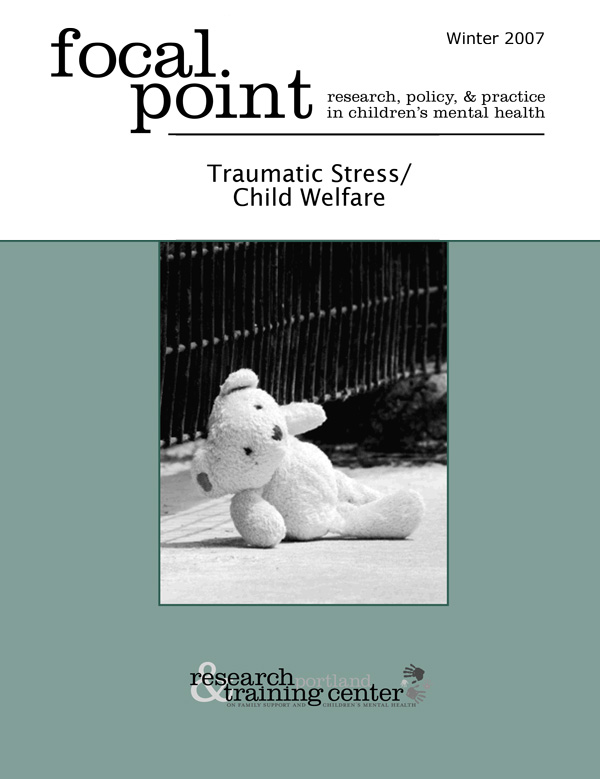Focal Point Winter 2007

"Traumatic Stress/Child Welfare" (2007), v.21(1)
This Focal Point issue focuses on child traumatic stress, particularly as experienced by children involved in the child welfare system. The causes and effects of traumatic stress are discussed, as are evidence-based treatments, and prevention strategies.
Access Articles in this Issue
-
Introduction: Traumatic Stress and the Child Welfare System
Walker, J. S. & Weaver, A.
This article defines child traumatic stress, describes some events that can cause traumatic stress, and summarizes the effects it has on children, youth, and society.
-
Complex Trauma in Children and Adolescents
Cook, A., et al.
This article provides a core background for understanding the psychological and physiological effects of multiple traumatic stress experiences on the developing brain. Steps for assessment and treatment are also discussed.
-
A Real Mother's Embrace: Reflections on Abuse and Recovery
Weaver, A.
The guest editor of this issue of Focal Point gives a poignant first–person account of his childhood abuse and subsequent recovery. A strong theme of Aaron's story is the enduring support and love offered by his foster family.
-
Evidence-Based Treatment for Children in Child Welfare
Stambaugh, L., Burns, B. J., Landsverk, J., & Rolls-Reutz, J.
This article reviews several treatment programs for children in the child welfare system who have experienced traumatic stress. The article focuses on treatments for which there is the best evidence of effectiveness.
-
Early Intervention as Prevention: Addressing Trauma in Young Children
Groves, B.
This article focuses on the need for early intervention to address child traumatic stress in young children. The article also describes the characteristics of effective intervention.
-
Adapting Evidence-Based Treatments for Use with American Indian and Native Alaskan Children and Youth
Bigfoot, D. S., & Braden, J.
This article describes the adaptation of several evidence-based treatments (EBTs) for child traumatic stress for use in Native American communities. The EBTs that are discussed attend to the broad cultural, historical, and intergenerational traumas that are part of the life experience of many Native American youth.
-
Creating a Trauma-Informed Child Welfare System
Igelman, R., Conradi, L., & Ryan, B.
One role of the child welfare system is to remove children from abusive or neglectful home environments. Ironically, sometimes the system itself can be a source of trauma. This article provides steps for reducing trauma within the child welfare system.
-
Child Trauma: The Role of Public Policy
Gerrity, E.
This article discusses the impact that federal, state, and local government policies have in promoting increased understanding of and effective response to child traumatic stress. Analysis of current policy issues and areas for improvement is included.